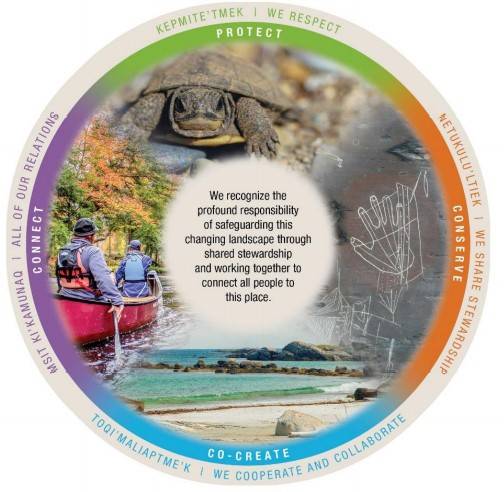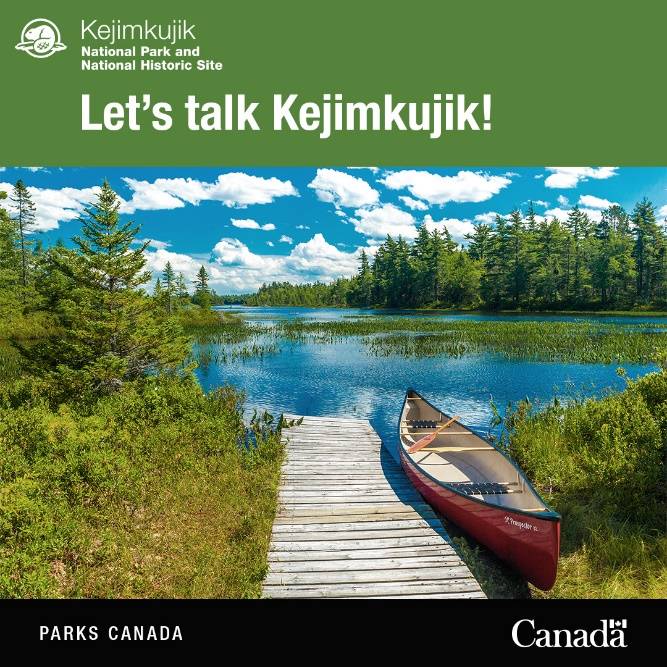
2021-06-30
Parks Canada again seeking public input on the future of Kejimkujik
by KEVIN MCBAINLocal Journalism Initiative Reporter
The public has another chance to have its say in how Kejimkujik National Park and National Historic Site of Canada will be managed.
Parks Canada staff are looking for public response to a recently released draft management plan for the area, which is an update from the last plan that was completed in 2010 and will help shape the direction of the federal park for the next 10 to 15 years.
Work began on a management plan in 2019, and Phase 1 of the project involved surveying the public and putting the information together in a draft document. Phase 2 is about engaging the public a second time, and will be followed by finalizing the plan and tabling it in government.
"We're going back out to partners, stakeholders, Mi'kmaq Nova Scotia and members of the public to have a chance to see the plan that we completed which is based on the first round of public consultation," explained Jonathan Sheppard, Superintendent of Kejimkujik National Park and National Historic Site.
"We're really pleased with the draft plan that we have right now. It was informed and influenced by a lot of great feedback from all sorts of different perspectives in the first round of consultations."
The latest public survey can be found at www.letstalkkejimkujik.ca and will be online until July 25.
According to Sheppard, there are a lot of changes in the new document, including "a much stronger interest and commitment to work with the Mi'kmaq of Nova Scotia for more of a co-created and co-stewardship approach to management," he said. "That's, of course, in recognition of the fact that Kejimkujik is a Mi'kmaw cultural landscape."
To this end, four key strategies in the plan are intertwined and integrated four key Mi'kmaw world view concepts. These are: 1. Kepmite'tmek "We respect" – Protecting the resource; 2. Netukulu'ltiek "We Share Stewardship" – Conserve – sustainability through responsibility; 3. Msit Ki'kamunaq "All of Our Relations – Connecting the people with the place; 4. Toqi'maliaptme'k "We Cooperate and Collaborate" – Co-create – achieving results together.
Other changes include a strong desire to hear thoughts around the notion of diversity and inclusion and making the sites welcome to everybody.
Still more changes include the priority on environmental leadership and green technology of being featured in the infrastructure at the park.
"We've heard lots of great feedback from people that have really influenced the draft plan, so that's good," said Sheppard. "I think also the timing is really interesting as we all grapple with the COVID-19 recovery approach."
He said it's been clear from local businesses and the tourism industry about the importance of Kejimkujik, "and that's been nice to see in some of the feedback."
Sheppard encourages everyone to look through the document. Those who were part of the Phase 1 consultation will see how their input was reflected in the document. For those not involved in the first consultation, this is a good chance to have their voices heard as well.
Kejimkujik was the first national park in the Parks Canada system where the majority of the park is also a national historic site. Although operating as a national park since 1969, the inland portion (Kejimkujik Inland) was officially designated as a national park in 1974 to protect a representative example of the Atlantic Coast Uplands Region.
In 1985, the seaside portion (Kejimkujik Seaside) was added to the designation to protect an area representative of the coastal characteristics of this natural region.
Kejimkujik Inland was designated as a national historic site in 1995, because it's a significant Mi'kmaw cultural landscape that attests to traditional Mi'kmaw occupancy and use of the area.
In 2010, Kejimkujik was designated a Dark Sky Preserve by the Royal Astronomical Society of Canada in recognition of its low levels of light pollution.









